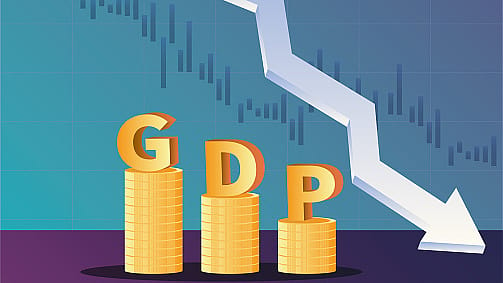World Bank downgrades India's GDP growth forecast to 6.5% for FY23
ADVERTISEMENT

The World Bank has downgraded India's gross domestic product (GDP) growth projection to 6.5% for the financial year 2022-23, saying the spillovers from the Russia-Ukraine war and the global monetary policy tightening cycle weigh on India's economic outlook.
Elevated inflation on the back of higher prices of key commodities, heightened global uncertainty, and rising borrowing costs will affect domestic demand while slowing global growth inhibits India's export growth, the World Bank says.
This comes at a time when exports and overall economic activity in India have recovered more strongly than the rest of the world.
"Amid slowing global growth, export growth will moderate while import growth will be driven by recovering domestic demand. Despite improved balance sheets of banks and corporate sector, increased capacity utilization in manufacturing, and Production Linked Incentive scheme, private investment will be dampened by heightened global uncertainty, elevated input prices and rising borrowing costs," the World Bank says.
Private consumption will be constrained by elevated inflation and labour market weakness, while private investment growth is likely to be dampened by heightened uncertainty and higher financing costs, the World Bank notes.
Headline inflation will gradually ease, averaging 7.1% in FY23 and likely to revert to the RBI's tolerance range by end-FY23, the World Bank says, adding that rising merchandise trade deficit will push the current account deficit to 3.2% of GDP in FY23.
December 2025
The annual Fortune 500 India list, the definitive compendium of corporate performance, is out. This year, the cumulative revenue of the Fortune 500 India companies has breached $2 trillion for the first time. Plus, find out which are the Best B-schools in India.
"The expected headwinds brought by lower growth and higher inflation are likely to lead to slow income growth. Hence, poverty and vulnerability are unlikely to recede to pre-pandemic levels and preserving some of the social protection measures adopted during the pandemic may be warranted," the World Bank says.
However, stable portfolio capital inflows, given the relatively strong macroeconomic fundamentals, buoyant FDI and ample foreign reserves provide buffers against the external financing risks, it adds.
To mitigate the inflationary impact, the government will likely spend more on food and fertiliser subsidies and, reduce taxes on fuel, says the World Bank, adding that both manufacturing and services activities have been expanding in India since at least January, and at faster speeds than the rest of the world.
Employment has started expanding in India month to month since March, but the recovery speed was slow until August when the recovery speed surpassed those in the rest of the world, the World Bank says. India's economy-wide employment index is improving month-over-month but at slower speeds than the rest of the world outside of Asia, and demand for the rural work program remains elevated, it adds.
In India, the recent depreciation of the rupee vis-à-vis the US dollar contributed to higher inflation, as did higher oil prices. Rising energy prices raise the cost of fertiliser production, and major producing countries such as China and Russia initiated export bans or licensing on fertiliser products in late 2021 or early 2022. Fertilisers from the two countries took up 35% of India’s total fertiliser imports in 2019.
India witnessed a foreign portfolio investment (FPI) net outflow of $29.7 billion in the first six months of 2022. But starting in July, portfolio investors turned into net buyers in India as tightening by the Reserve Bank of India widened the rate gap with advanced economies, the World Bank says.
